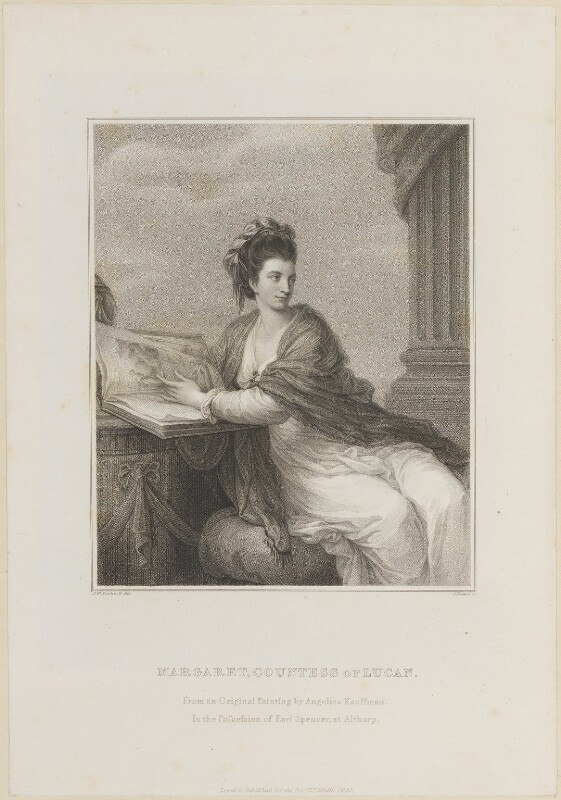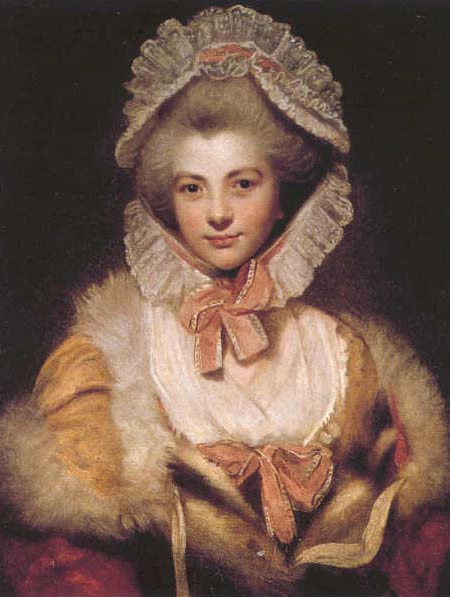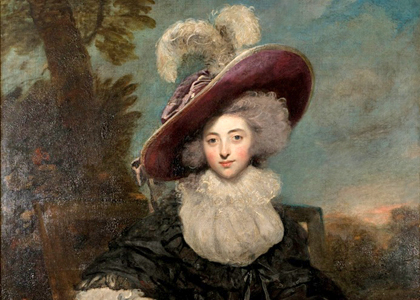I am delighted to welcome back R.M Healey, hot on the heels of his previous piece, A Georgian ‘Trip Advisor‘. Today’s topic is however very different, so I’ll hand over to him to tell you more:
I purchased this signed drawing below of Frances Molesworth by the talented amateur Lavinia Bingham a few years ago in a provincial auction house. It is interesting for a number of reasons, not least because the artist was Princess Diana’s great, great, great, grandmother.
The sketch shows Frances seated on a sofa, with a parrot perched on the top rail is dated 8 June 1780, when Lavinia was just eighteen years old and her sitter four years older.
However, the relationship between Lavinia and Frances is also significant, as the two girls were part of the same family.
Frances Molesworth, born in Wembury, near Plymouth, Devon, in 1758, the daughter of William Molesworth, and Elizabeth Smyth. Frances entered the household of her mother’s sister, Margaret Bingham (née Smyth), Lady Lucan, after the early deaths of her parents.

So, the two cousins grew up together and it is possible that among the archive of drawings by Lavinia at the Spencer seat of Althorp, there are others that depict Frances, for Lavinia was an enthusiastic sketcher, as we shall see. It would also be revealing to know how easily Lavinia accepted the introduction of Frances into the family circle. Perhaps the future discovery of such personal documents as letters and diaries, might shed some light. Unfortunately, although biographers, for obvious reasons, have focussed on Lavinia, nothing of significance has been published about Frances apart from the bare biographical facts. It is likely that the drawing, which Lavinia seemingly presented to Frances, was executed at the family home on the Thames at Laleham, though the present Laleham House dates from 1803.
Interestingly, the sitter seems to be wearing the same, or a very similar, wide brimmed hat trimmed with feathers that she was to wear in a later portrait by Sir Joshua Reynolds. No doubt at the time the two girls were rivals in the marriage stakes.
Both had striking good looks, but whereas less than a year after the sitting Lavinia had married George, the second Earl Spencer, brother of Georgiana, Duchess of Devonshire, Frances rejected two very eligible suitors, including Lord North, before she agreed to marry John Jeffreys, Marquess of Camden, in 1785 bringing with her a generous settlement of £40,000 from Lord Lucan.
Camden’s name lives on, of course, as the developer of London’s Camden Town, which began to be built around 1791. At the time the couple were living at Bayham Abbey.
As an amateur artist Lavinia evidently inherited some of the skills of her mother, Margaret Smyth, whose miniature portraits, landscapes and book illustration were admired by Horace Walpole.
The sketch of Frances Molesworth shows that though the draughtsmanship is weak in some areas, the potential for improvement was there, and indeed by the 1790’s such productions as ‘Nice Supper’ and ‘A Pinch of Snuff’, which were both considered good enough to be engraved, demonstrated a great advancement in technique.
On 10 January, six months after the drawing of Frances was executed, Lavinia, evidently a little infatuated with her future husband, wrote to him describing her daily regime after getting up:
…I then go to breakfast—then to draw, sing and play, in order to improve those talents for your future amusement—then I write to you for your present amusement, then I take the air, or a long walk to get good looks for you—then I eat my dinner where I think of you—then I sit and fret until the post brings me a letter from you which I devour and read over for an hour and a half, then I send mine to you—then I draw again or improve my mind by good Books for you the rest of the Evening—then I go to Bed, where I dream of you—so you see that you always are the burthen of my song. Have I told you that Lady Edgcombe & Dickey came here the other day to see my drawings?
The following day Lavinia looks forward to finishing her portrait of George:
…there will not be vermillion enough in London to paint your picture if you sit again when you return—and I am out of my senses when I think how will you be when I see you next.
In a postscript she refers to her two pet dogs, Bow-Wow and Salvatori, and the tiny drawings she did of them, are added to the letter. She pleads with George to keep the letter, as the drawings on it hadn’t been copied. Perhaps, she suggests, he might hang up the letter ‘among your other Originals’.
Less than two months later, on 6 March, the pair were married. At the end of November Lavinia was ‘with child ‘and on 6 December was still drawing, though evidently suffering from morning sickness. She wrote from her new home at Althorp:
I am drawing away, but if I continue so most sick, as Mother Roberts says, I shall not be able to finish a great many things to show you, although you expect them, you unreasonable dog—for “what is the use of having her if she does not draw”.
Who could not be charmed by these letters, especially those written before her marriage? At this time Lavinia was described as a ‘sweet creature’, but her personality seems to have altered somewhat following her arriving at Althorp, where she was described by some as bitchy and arrogant.
Amanda Foreman, biographer of Georgiana, Duchess of Devonshire, called her ‘moody, vindictive, hypocritical ‘and ‘neurotically jealous’ of both Georgiana and the Countess of Bessborough. Certainly, she appears to have ruled her household at Althorp with a self confidence born of her elevated station. Nevertheless, her beauty and intelligence proved popular with her many guests and hers was generally a happy marriage.
She bore eight children and lived just long enough to see her eldest son, Viscount Althorp, become Chancellor of the Exchequer. Lavinia died in 1831, aged sixty-nine, two years after the death of Frances.
Sources
British Library Add MSS 75926 – 75938 1781 – 1830
Amanda Foreman, Georgiana, Duchess of Devonshire.





Forty thousand pounds was a huge settlement for a wife’s niece.
Was this money inherited by Frances from parents or relatives and left in trust with Lord Lucan?
Georgiana Devonshire’s own daughters, daughters of a rich duke, marrying an earl’s heir and the youngest son of a marquess respectively were given twenty and ten thousand pounds each from what I remember. Their illegitimate sister Caroline St Jules got ten thousand from the duke when she married a Ponsonby, youmger son of an earl.
Was a duke or marquess worth more and so expecting more in a dowry?
Shinjinee
LikeLiked by 1 person
Frances was left extremely well provided for by both her parents whose respective families were wealthy. You may find this article of interest. from Camden Town History – http://www.camdentownhistory.info/wp-content/uploads/FMolesworthArticle-1.pdf
LikeLike
What an interesting life she lead!
LikeLiked by 1 person
Absolutely 🙂
LikeLike
I came by your post again looking for a “Miss Bingham”!. Apparently, Miss Bingham and Miss Molesworth both were present at Lady Stormont’s ball on January 1782.
not just them but I believe Lord and Lady Luncan, Mr. W. Pitt, Lord North and Mr. North, etc
Miss Hamilton, Miss Murray and Mr. Hatton were also invited, again shamed that Dido wasn’t invited to this ball.
https://www.digitalcollections.manchester.ac.uk/view/AR-HAM-00001-00018-00039/1
I’m sorry, I haven’t reply since I don’t think I can through email, but yes this is the ball I mentioned before, where I think they might be acquainted.
anyway can’t wait for your Maria Belle’s post 🙂
LikeLike
Yes, that’s the one I’d seen too. It may well be that Lady Elizabeth Mary Murray was there as it was her step mother’s ball, but we may never know which, if any parties Dido Belle was invited too, but research will no doubt continue for any social mentions of her.
LikeLiked by 1 person